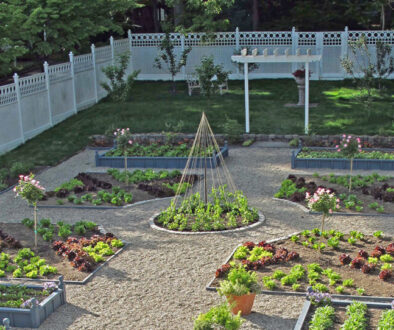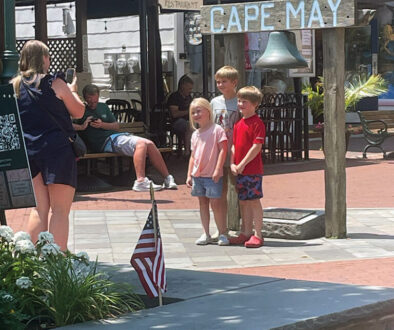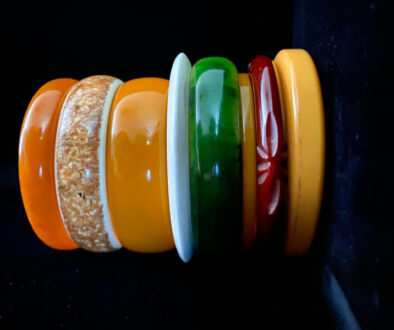Albert Music Hall
Where in South Jersey can you get a night of music and food for what amounts to pocket change?
Head up the Garden State Parkway to Waretown, home of the historic Albert Music Hall. Here you’ll find weekly three-hour concerts featuring country, bluegrass, and folk bands for an astonishingly low price: $6 general admission, a buck for kids 11 and under. A food stand in the back offers cheap eats (chili dogs, cheeseburgers, kielbasa with kraut, meatball “subs and tubs”) for $2 to $5, plus hot and cold drinks and desserts. The atmosphere could not be more laid-back: you can dine family-style at several long tables or just take your food to your seat.

Long story short, at Albert Music Hall, you can enjoy a whole evening of entertainment and grub for what you might ordinarily pay for parking.
From the outside, the nondescript music hall looks like any other municipal building, drab and beige-ish. Inside, it’s a revelation: a 350-seat concert venue under a high beamed ceiling, with a beautiful stage and dedicated sound booth. The walls are festooned with antique farming equipment (crosscut saws, baling hooks, even a horse collar) and musical instruments (banjos, zithers, mandolins). There’s the original gutbucket bass played by Joe Albert, who co-founded the music hall with his brother, George, a fiddler. There’s a photo of folk icon Pete Seeger, who performed here in the 70s.
The mini-Grand Ole Opry started half a century ago, in the depths of the Depression, when Joe bought 56 acres of unspoiled Pinelands for just $2.50 an acre. The Sayreville carpenter then built a hunting cabin he christened the Homeplace. Every Saturday night, he and his friends would unwind with old-fashioned jam sessions, playing hillbilly, folk and Celtic strains, as well as their own compositions.
After George’s death, when the weekly jamboree moved to a Waretown auction house, Joe & Co. established the Pinelands Cultural Society to preserve the music, traditions, and folklore of the Pine Barrens. This was a dedicated bunch: in 1992, when the auction house burned to the ground, the homeless musicians performed for a time in a parking lot.
A local elementary school lent its stage until 1997, when a new dedicated music hall opened on Wells Mills Road. At the inaugural concert, 45 bands raised the roof for more than 1,100 attendees.


The line was already forming when I arrived on a Saturday in May (doors open at 5:30pm; the show starts at 6:30pm). Inside, a vintage gun rack served as the ticket booth. A country store peddled classic vinyl albums, cowboy hats, and other memorabilia, including the famous bumper sticker: “I’m a Piney, from my nose down to my hiney.”
Some people, clearly regulars, carried their own cushions to augment the auditorium seats (I didn’t find the seating uncomfortable at all).
It’s all so down-home friendly and cheerful. PCS President Danielle Marrone says there are no backstage restrooms or green rooms, so the performers must interact with the audience, and vice versa. “The place was designed so the band and the audience would be one. The audience feels like part of the show, because they really are.”
It’s true. The night I was there, one of the bands invited everyone to join in singing Bob Dylan’s anthem for peace, “Blowin’ in the Wind.” The audience members weren’t shy—they burst into song, growing ever stronger for a resounding finish. It was an incredibly moving moment.

Over the course of the evening, I heard Dolly Parton and Patsy Cline, Johnny Cash and Bill Monroe, Hank Williams and Ralph Stanley. Occasionally, says Marrone, bands may swing into latter-day folk-rock like Creedence Clearwater Revival or even the Beatles, all with a bit of a country twang.
Next door is the “Pickin’ Shed,” where musicians can sit in a semicircle and sing and play informally. I slipped into a back seat to listen for a while, and it was great. By the way, all are welcome, including newbies who may want to play alongside the pros.
So how do they do it—charge rock-bottom prices, keep the lights on and the stage full, and even manage to grant $35,000 in scholarships every year?
“For the last half-century, it’s been all volunteers,” says Marrone. “Nobody gets paid—not the sound people, not the kitchen, not the board. It’s a daunting task, but we all work our tails off, because we love it.”

The musicians play for free, too. “They love the feeling they leave with,” explains Marrone, who performs under the name Redbird. “Just like the people in the audience, the bands love it for the nostalgia and the music and the camaraderie.
“Albert Hall is not four walls,” she says. “It’s a feeling.”
It’s a good feeling. A homey feeling.
Fifty years ago, Albert Music Hall started with a mission: to give people a place to hear the old-time music without spending an arm and a leg. Mission accomplished, thanks to Joe and George Albert and generations of their friends.



